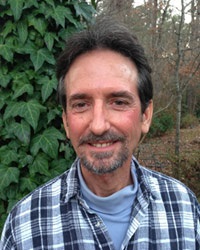 Interviewee: Matt Miller, Director of Monkey Bay Wildlife Sanctuary
Interviewee: Matt Miller, Director of Monkey Bay Wildlife Sanctuary
Interviewers: Andie Whitfield, Jessica Meaden, Sam Buse, Ollie England and Beth Grant
Location: Monkey Bay Wildlife Sanctuary, Belize.
Date: 6th September August 2013
Theme: The development of tourism in Belize.
Keywords: tourism development; cruise ships; independent travellers; cultural differences; Belize Tourist Board; natural capital.
Notes: This interview was conducted by undergraduate students from Plymouth University, UK, whilst on geography fieldwork in the country and whilst addressing specifically the issue of tourism developments in Belize.
Andie Whitfield (AW): So basically, we are focusing down on cruise ship tourism. So it may not be your expertise/skill, but we feel like you would at least have a sense of what’s going on. Is that right?
Matt Miller (MM): Yes
AW: So what’s your impression, at the moment, of the cruise ship tourism in Belize? Give us your overall summary.
MM: Well, my impression of it is that it benefits a few people rather than many people. I see the difference between overnight tourism and cruise tourism as benefitting those that are already well off become better off; while overnight visitations give people at all levels of society an opportunity to engage with the tourism industry. So, you know, the other end of the spectrum would be a community-based overnight homestay – you know, where guests stay in a rural village guesthouse or family home and that’s where you can put your money to where it is needed the most; in the hands of local rural people.
AW: We saw that in Maya Centre Village actually.
MM: Yes. When we run students through the homestay programme in Maya Centre it puts money in the hands of the woman of the house, which is an unusual thing in this culture because men are the usual income earners and women, they might help him manage his money; but for women to make money like that is a recent positive change. And I’m going to go on a little bit more about this because it’s important that women handle the money, or earn the money, because you know what they do with it? They invest in the family; buy the kid’s school books and shoes and they maybe improve the kitchen or the house. Typically, when the men get a hold of cash, they tend to go to the bar and drink. And so this is one way that tourism can really benefit rural communities in developing countries like Belize – whereas cruise tourism is at the other end of the spectrum, I mean they sell big fancy diamonds and the tour operators have to have a high level of standards in order to compete for the cruise tourists’ attention and money and there’s not yet that many people in Belize that have that level of sophistication. So what happens is these international companies come in and plant a franchise of their international company to run tours, cell food, art and craft. And they import big boats and things that are not from this part of the world in order to capture more of that flow of money that goes off of the cruise ship. So I’m not too impressed with Cruise tourism in general.
AW: No. I think we can pretty much agree with that. What we saw today, we saw the flow of money go off the ship and you’re lucky if it will get to the port.
Jessica Meaden (JM): With the port all owned by the private companies.
AW: It’s all privatised, like the Diamond Company; 49% built by the cruise ship itself – so that’s why they really want to keep you there.
MM: Yup
AW: And then you’ll be very lucky. I don’t know if you heard that we said that 2,900 got off the boat today.
MM: Ok
AW: 2,100 left the port, but of those 2,100, only 450 took independent travel from then on.
MM: Out of Belize City.
AW: Yes but, you know, for the Belizeans. Otherwise they want already pre-booked tours, so it’s a minuscule amount.
MM: Got you.
AW: So that’s what I was quite surprised by.
MM: It’s quite impressive that you were able to capture that division of where people went.
AW: And then 900 people just stayed on, sorry 700 people, just stayed
MM: In the terminal?
AW: In the port. Yes.
Sam Buse (SB): And then 2,000 people stayed on the boat.
AW: Yes
SB: And we asked why, and he said “oh they are either hung-over, or they’re too old.”
AW: And also the cruise ship passengers, the cruise ship companies, I don’t know if you’ve got the sense that the cruise ship companies deterred people from going.
MM: Yes
AW: They’ve often said things such as “it’s too far.”
MM: Deterring the people from not going far. Yes. An interesting story, just before coming here on this trip, about a week before you all arrived there was a PBS news report about cruise tourism in Alaska, where a lot of North Americans go, and they discussed Anchorage (which is a big cruise destination) where people get off the boat and shop for Native American craft or smoked salmon or all kinds of, you know, products from that unique part of the world. And they have these cruise dock lecturers, they’re called, and people gather around them to get the scoop on what to do in town and where the good deals are and these lecturers are biased already because the cruise company that hires them also has financial relationships with retail vendors in town. And the role of the lecturer is to try to influence the passenger to go to those shops and avoid the others that don’t pay a $25,000 a month fee to the cruise company, so that the lecturer will mention their name.
AW: Yes.
MM: And that was found in the courts to be illegal. It’s like racketeering; it’s trying to control a market as a monopoly. And the cruise company was fined $200,000 which isn’t much for them to pay back into the community that they were manipulating. And it was a big ‘to do’ in the news, when really it was just a slap on the wrist. So it’s just something that was brought to the light really that I didn’t know was going on and I’m sure that a similar type of influence is happening here.
JM: Do you think it’s a sort of ignorance on the visitor’s point of view? Because I mean we’ve seen a different light – I asked yesterday whether they have more people come there as an independent traveller, because when you’re an independent traveller or a backpacker you do your research before you go. I mean, like you take out your Lonely Planet guide book and you go on TripAdvisor and all sorts of different things, whereas people that get on a cruise ship just go – and they’re going a lot of the time with no idea of what it’s about., I mean today, Sam told me about the cruise ship website and how they were glorifying Belize even though no-one is going to get to see Belize
AW: The bits they were advertising
SB: Like “You can go swimming with sharks off the reef or trekking through the forest”. But they don’t even advertise that and they don’t even do it as a tour.
AW: If people were going on a tour, what was it? 89% ended up going to Altun Ha and then maybe some cave tubing but 89% just went to Altun Ha and then back.
MM: Yes.
AW: Which is nothing.
MM: And the sad thing is that the passenger then goes home and says “oh we visited Belize” but they don’t know what the country is really like.
AW: Yes, we were getting quite angry.
JM: That’s what I mean about the port. Because people are thinking they’re visiting Belize, but if they walked just 20 steps outside that port they would see a totally different side of Belize.
MM: Right.
JM: And, maybe they would change their minds about helping the people and the community because, you know, you can see it, like there is so much deprivation outside of the port.
AW: We were relieved to go back into Belize City.
AW: I was wondering if you know.… So we spoke to Terry today – who is part of SustainableTourism.bz and she was saying that she thinks, perhaps, cruise ships have too much influence over the country – because they are bringing so many tourists to Belize, they can actually use that to get what they want. Do you think that’s the case?
MM: Absolutely. And when the idea that Belize was going to be a cruise ship destination came about, there were negotiations right up front between the companies and the government about what kind of arrangement are we going to have. How much are we going to pay per passenger to come to the shore? What kinds of facilities can you construct for us so that we can operate our cruise operations? And there was hardly anything that the government could influence the company to do. They literally just said “here’s what we are going to do, take it or leave it.” And if the government had said “well that’s not good enough for us, then the threat was “well we just won’t come to Belize”. So they do wield a lot of influence and generate big bucks and it’s very easy to influence a politician with, you know, a gift.
JM: Much of it is about money as well.
MM: But I think, you know, on your question about the education of the tourist – tourism is the number one largest industry on the planet. It’s very important that we as tourists (eventually all of us are going to be tourists at some point in our lives), that we understand how our dollar impacts the destinations we go, how we get there and all of that stuff. So, if tourism really is the biggest industry on planet earth, then it should be part of our training as young people early on to understand that, you know, what our choices mean.
JM: Today personally for me, I mean I was just stood there and I decided that I never ever want to become the kind of person that stands on a port and says “I’ve visited a country”. I never ever want to do that.
Ollie England (OE): It was a culture shock going from there and then going to south Belize City.
AW: We really were relieved to get back into Belize City.
MM: That’s interesting.
AW: So you think that cruise ships wield a lot of power, can you see any way that perhaps the government or other stakeholders in Belizean tourism can get some of that power back or influence?
MM: I don’t know if they go head-to-head with the influence of the cruise companies because their profit margins per quarter are more than the annual budget of the whole country. They’re so powerful because of their economic influence. But I think that the Belize Tourist Board could focus on somehow educating those tourists that do land on our shores, about why this is such a great destination to come back to with their families for an overnight visit, you know a week-long stay and visit the parks, go mountain biking and view Victoria Peak and the Blue Hole and all these other natural features that Belize is becoming so popular for.. So I don’t know that they could go head-to-head but they could do a work-around where they are beginning to let people know what this country really does have to offer and why it’s worth coming back on a family vacation on another time.
AW: Like an enticer for the future.
MM: It’s a way to educate – because they are not getting it from the cruise companies.
AW: Do you think it’s too late for Belize to try and switch its focus on another type of tourist? Like backpackers or ecotourists? People that stay overnight. Do you think it’s too late to do that?
MM: No. And they have been doing that from early on. When you look at the BTB website and some of their promotional materials, they do a very good job of promoting the cultural aesthetics of the country and how friendly people are to interact with and share their culture. And they do a fantastic job displaying all the natural features, from the bird watchers to the, you know, the river paddlers to the snorkelers and SCUBA divers. So they already, I think that BTB is doing a good job and I think they could do more specifically targeting cruise passengers on why this country is worth coming back to again for a second, long-term visit.
OE: Are the overnighters and long stays with other companies in the BTB’s plans? Do you have any say at all? Do you have any influence over them?
MM: Well I think they have an open ear to comments. I don’t know really what the communication channels are, but the BTB is supported entirely by our accommodation tax. So with you guys sleeping here and paying seventeen dollars per night to sleep in the dorm, nine percent of that revenue goes directly to the BTB.
OE: OK
MM: As a tour operator/hotelier – we are classified as a hotelier – then we are the ones responsible for collecting that and paying it on time. There was a time when I would avoid paying it and they came back and they slammed me with a big fine. It took me five years to pay it off – so I learned my lesson the hard way. But, I think, because we are supporting BTB by pay the accommodation tax, then there should be a way we can influence their policies. And I don’t know, I don’t really have a whole lot of desire to try to influence the BTB other than when they go to these big tourism trade shows in Europe and North America, it would benefit our organization if they had at least a portion of their promotional materials to let people know what a great education destination this is for students and researchers who are interested in doing the kinds of the experiential learning activities that you all are doing. Because, when you look at the tourism pie, there’s a growing slice that represents education programs and student groups that come – and their numbers are increasing. And you know, mission groups that come to do service projects for churches, there is all this service learning tourism that is coming to Belize that doesn’t really give much flash in the pan in the eyes of BTB. It’s not who they are going after – that just kind of happens because of community relationships or individual companies advertising on the web to attract that clientele. But BTB, I think, could show a stronger effort toward reaching out to these tourists as well.
SB: Going back to the financial side, what do you think of the banking system in Belize? Especially the business banking. Do you think they do a good job? Do you think it’s a success or do you think that they could do better?
MM: Banking, I think, is fine. It’s expensive but working fine. They still pay a good interest rate on money in the bank.
SB: The reason why I asked you that is because yesterday when we spoke to the lady that, just three years ago, opened the Caribbean Shores hotel in Hopkins, she said that the banks were absolutely unbelievably bad.
AW: Do you think it’s because she’s just moved from the USA and perhaps is not acclimatised? Or do you think there is some basis there for her to comment on?
MM: And its true there is a basis. I mean, from what little bit that Martin told me, she had a bitter taste in her mouth overall about Belizeans and the culture and the problem with holding on to employees because of dishonesty and stuff like that. But when you leave a developed country and you move to a developing country you have to expect that things are going to be different and when you bring the US or European model and try to lay it down and expect it to work the same in this context, then you are going to be disappointed. So there may some differences in the way that banks would do business in North America than how they do business here. One of the frustrating things is that the banks take a big chuck of money out of wire transfers from abroad. They not only take the part-exchange fee (which shaves off a couple of percent points), but the overall wire transfer fee that can run into the hundreds of dollars. So you’re dealing with a customer – let’s say I’m dealing directly with Plymouth – and Chris and I have agreed on a price for your programme and I send him a bill and he sends that amount of money, but by the time his bank is through with it and my bank and the corresponding bank in New York (because, I mean, you can’t wire money directly from London to Belize City – it has to go through New York) and so that bank takes a piece and then the arrival bank takes a piece (my banker) and by the time I get it I am five hundred dollars less than what Chris paid me. So that pisses me off about the banks and I understand its convenience is key; it’s a way for him to get money to me quickly and securely so that I can run the programme when you all arrive, but it’s a rip-off. It’s a rip-off. So that could be part of what she is talking about. Because if her customers are coming from North America and she’s asking for a guarantee deposit, the banks are getting a piece of it.
SB: She also mentioned the fact that she was building this new apartment next door as well and she was like “one million dollars in the bank” – she said that to us – and she was like “oh I had real trouble getting it in there”.
OE: Yes she was complaining that the guys working for her could get ten dollars in there and were saying “oh you did it so easily”.
Beth Grant (BG): I think one of the main things from everyone that we have interviewed, is that there is a massive miscommunication problem in Belize. What are your opinions on this?
MM: Well any person that is coming from a developed country with that mindset and wants to transplant it and expect it to work the same, is going to find that there are lots of miscommunications.
BG: We found out also that Belizeans, like people in the Maya Centre who are actually from Belize, they have had trouble with the government as well in terms of communication.
OE: Like trying to create licenses and what you need for your business.
JM: I think the thing is that people think that the Belizeans are uneducated, but they are educated in different ways to what we perceive education to be.
MM: Good point.
JM: So that’s how I see it as a problem.
MM: Very good point.
JM: The locals know their stuff, they really know their stuff, but why, you know, the lady was saying yesterday that she had to get a tour guide license or whatever but she was saying “but why? I know about my plants, I know about my land and I have lived here my whole life. Why do I need to go and buy a license and why is the government telling me this and making my life difficult?”
SB: Yes. They said that they threatened them with a machine gun! They came in with a gun. Yes, they said that it was very scary and it really frightened her.
AW: Any comments on that?
MM: Well, big money attracts attention and if she’s flaunting it and she doesn’t know you from Adam and she’s telling you that she tried to put a million bucks in the bank, and then she is telling a sensational story to attract attention to herself. And you can bet that there are other people around listening and they want to get in on that too. If she’s got those kinds of resources, then I want my piece of it. You know, a Belizean might look and say, you know, how can I get my piece? So, I think what is interesting is the comment about Maya Centre having problems getting their trade licenses or, who knows, getting their tax license paid or getting a cell phone connected. There’s a big challenge with communicating with people in authority, because with that power comes a big fat ego that says “well, they are lesser than me and I don’t have to tell them everything that they really need to know.” And you’ll find people here in Belize who won’t share information freely unless you ask them very specifically for an answer to a question. One example, you know, when Josh walked into this land back in 1975, no one ever bothered to tell him that when the river floods it gets thirty feet high and two miles wide and he worked here for eight years putting in the pasture and stringing in the wire fences and releasing the cattle and then they all drowned and he was shocked and everybody else was like “well didn’t you know the river rises every year?”. So it’s the same thing, for example, Fiona has just arrived from South Africa and so she said “let’s go to the bank so that I can open my account” and we called them and said “what do we need to bring?” And they said “bring your ID”. OK, so she brings one form of ID and she gets to the bank and they take her ID and they say “ok now where is your driver’s license?” or “where is your letter from your banker?” And they kind of lead you into this, and it is almost as if they are saying “got ya”, because you didn’t ask me so why would I tell you what you need to bring. Whereas in America or the UK or Canada, people would be forthcoming and say “here’s the checklist of things that you need to come and open your account” and it would work seamlessly. Here it is like …
JM: The lady yesterday said something like “if you had patience before you came to Belize then you will lose it and if you don’t have patience before you get to Belize then you will gain it”, or something like that.
MM: Yes. That’s a cliché that a lot of us from other places use to say. The reason that is happening is to teach us to be patient and tolerant and accepting of our differences. And it’s really true. When you step out of your comfort circle, something is going to rub you the wrong way and we have to learn how to adapt to that.
AW: That was really interesting, especially to hear it again from a different person because, you know, that story is actually very much the same. But moving away from infrastructure and communications and getting back to cruise ships, do you have any apprehensions or are you optimistic about, maybe not for your business but for Belize as a whole, about the proposed new Norwegian cruise liner dock down in Placencia? Are you for or against?
MM: No, I don’t think that is a good idea. I understand the people of Placencia think it’s a bad idea because they have built a very strong tourism foundation on the overnight guests who come for the natural beauty, the coast, the diving, the fishing, the great food, the inland tourist accommodation, routes to Cockscomb from Maya Centre to Placencia. So in Placencia you can do it all and they certainly don’t need cruise passengers in bikinis with big fat rolls walking down their sandy lanes, you know. It would just be a total distraction from why people go to Placencia in the first place. I think it’s a bad idea for other ports to set up in Belize.
JM: I would be interested to know what your opinion is on the independent people that come into Belize, like the lady that we spoke to from Caribbean Shores yesterday, about them taking over, you know as they do, like in Hopkins the whole south side is pretty much foreign-owned land and they have done it up and I’d like to know what you think about that. Do you think it will go the same way as cruise ship tourism is going? Do you think that it’s a good thing or a bad thing?
MM: Well, I’ll probably be talking out of one side of my mouth and not the other because I myself am a large land owner and I’ve chosen to take this land and strip it of its development rights and that lowers the value. But we’ve actually gone through an exercise here that says that this land will stay protected long after I’m going to be here, because we have used the legal instruments available to us to say that any future landowner – there is something attached to the title – so when it transfers to another owner, they’re now restricted on what they can do on this property. Other people, most people, would look at this probably and say “oh well I’m going to work this for a few years and then hopefully the value will rise and when I’m finished I’m going to sell it for more than I bought it for”. And so I think Josh Brown – the original purchaser of this land – had a very unique approach that I’ve bought into to try and help him move his project forward. So when I see foreigners taking over the south end of Hopkins I don’t think it’s a very good idea as it creates a division in the community. You know, there is white people down on the south side and then there is less well-to-do people in the north and that just creates division in communities rather than integration and I’m sure that the resort owners down below see the folks up north as their labour pool – they want them there but they don’t want them to be partners in the business and they aren’t going to elevate them to high positions because they are cheap labour; and they’re not trained and educated at the level that it would take to run the business or manage the business. So it’s a delicate thing.
AW: It seems to me that most places we have gone to and people we have spoken to in relation to Norwegian Cruise Liners have been pretty much fairly against it unless it develops into community based tours like where they go into Maya Centre and they actually experience it. Like the lady from Maya Centre said that she doesn’t want to go down to the dockside and do her bit there. She was definitely determined that she wanted the tourists to come to her. So I was just wondering how you think that the government is listening to the people? Do you think they are listening to the people? It seems to be a general move against cruise ships?
MM: I’m sure they are hearing them, but the influence of the industry itself on those that are in the decision-making positions and the potential for that elite group to make money from it is probably deluding and the comments that they are getting from the general population.
AW: Do you think that the government sees the potential for cruise passengers to go further inland and actually spread their money independently amongst Belizeans, or do you think that they don’t actually know about that? Or do you think that they know about it but are just turning a bit of a blind eye?
MM: I think the government and the people in the Belize tourism industry, and in the government and the Belize Tourism Board, they know about the potential to spread those people out to more places and for those dollars to be used more effectively in developing our communities. But it’s probably a free market thing that is going to make that happen. If people here were more savvy, maybe they would be able to put up websites and say ‘visit us on your trip to Belize’, or maybe it’s titled ‘Cruising to Belize?’ and you click on that and you can see all the alternative eco and the community-based or the cultural exchange opportunities that are available and for those maybe ten percent of the cruise passengers interested in that type of thing – they will write to inquire. I just got an email today from a guy; “Hi my name is Michael, I’m on a cruise to Belize in December, is there any bird watching at your place?” That was all he said. So I wrote back and said “that’s cool that you’re coming and we’re about thirty miles from the cruise terminal, it would be easy for you to get here and yes there are five interesting habitat types; here’s our bird list of the things that your can see here and we would be delighted to host your visit so let us know how we can help”. I didn’t try to sell him anything, I didn’t say to come and have a meal or that there was an entrance fee, I just said ‘here is the information that you asked for, let us know how we can be of service’ and when somebody throws like that and they get an immediate response that’s focused on exactly what they asked for, I’m going to have a nice little dialogue with this guy over the next couple of months and he may wind up coming here with his family and hiring a local guide and maybe even taking a half-day float down the river in the canoe with one of our guides and staying for lunch. I might make a hundred bucks out of the deal and that’s the potential that anyone operating in Belize has if you’re willing to advertise and then engage with the person. You can’t have like a robot respond and say ‘yes, there are birds here’ – it would go flat. You’ve got to make it personal and engage the person and for them to want to know more about what we can offer them.
JM: But then you’ve got to have that person in the first place that is doing their research.
MM: Yes. Right. I’ll say ten percent might be looking online to see what else is to do in Belize other than what the cruise ship is offering. But the ninety percent are just happy to be on the boat and eat all they can and burn their skin in the sun. That’s an American approach to cruise ship tourism. It’s a great rate for eighty bucks a day to get your room and all you want to eat, you know, you can’t even go into downtown Atlanta – where I live – and do that for that price. I met one woman, when I was helping my Dad do the retirement community move, and she said “oh I didn’t choose a community, I just go on a different cruise every week – it’s cheaper for me to stay on a cruise boat in my retirement, than settling down into a retirement community”.
JM: But the cruise passengers today, they had to pay five dollars just to get out of the port and that money goes back into the private investors.
MM: You mean the individual passengers?
All: Yes.
JM: A small amount goes to the government and it’s supposed to be going on the roads outside but, I mean, you can’t see anything developing.
MM: Well we did hear that ten percent goes to PACT [Protected Areas Conservation Trust] (twenty five dollars) and Belize City were saying that they get a piece of it for infrastructure but I didn’t know that it actually came out of the pocket of the tourist. I thought the cruise company paid that based on the number of people they had on their ship.
JM: The guy said today five dollars per person.
AW: It might be paid by the ship though.
MM: We don’t know, I think it’s probably included in the lump sum that they pay. It’s like the airline flight. In your ticket here, you paid an extra thirty dollars that stays in Belize and most of it goes towards that PACT fund, but it’s the departure tax and now it’s incorporated into the ticket rather than you paying it just before going through immigration. I think that’s happening with the cruise terminals.
JM: And that’s the point I’m making; a lot of it goes back into the government.
MM: Wouldn’t it be great if that was triple that and then we would have a better relationship with the cruise company?
JM: Five dollars per two thousand five hundred people a day and, most of which is going straight back out.
AW: Yes, five dollars doesn’t seem like an awful lot of money.
SB: It’s like the hot sauce they sell there. We’ve seen it as $2.75 Belizean, but in the port it was $8.50 American.
MM: Yes, they know very well. [Pause] Also, in the past, there were big problems with cruise ships dumping their garbage over the side during a cruise and emptying the bilge with all the sewage into the ocean when they are cruising and who knows if that is still going on? It’s supposed to be regulated but it’s sort of a self-regulating industry because there is no-one following them. Anyway, those are issue too that have, in the past, influenced or put a bad name on the industry; is how they manage their waste. I think the cruise ships have negotiated with the government to be able to offload their solid waste to go into a landfill. So that’s another, you know, certain environmental cost.
JM: They are thinking of putting a road all the way from the road to the island off Belize City.
MM: That’s like five miles.
JM: And every one of us was like “what!?”
MM: Yes, that has been debated now for over ten years.
AW: Yes, it’s in one of the books that we are researching.
MM: And when a certain political party was in they had a ‘let’s go do it’ approach and then they were voted out and now it’s resting but it’s still brewing because it’s big money people that have influence over government that is driving all of that. But what a disaster that would be. You know, first of all of the dredging that would need to take place to sink piers; that’s going to stir up sediment. And it goes within two miles of this beautiful manatee sanctuary that’s been declared as a marine reserve. But with the events of hurricanes that come through here, I can’t imagine it surviving though a big storm with an eighteen foot storm surge. It would be an expensive piece of infrastructure to maintain.
AW: I don’t know if this is the last question, but I’ve got a question. I was wondering, as a stakeholder in the tourism industry, where do you see tourism in general going in the next ten years? Do you see a reliance on cruise ships? We have also seen a lot of people thinking that Belize is going to aim for the higher-end people (such as in Hopkins). So yes, if you could just tell me where you think it is going?
MM: Wish I could predict. Here’s what I hope will happen. I see the world, in general, becoming more and more developed and so that makes places like Belize (that are still relatively underdeveloped) more attractive to people who want to see nature and how natural systems function and I think that that is going to continue to be a big draw for global visitors and tourists to come here. You’ve got, you know, beautiful rivers and an abundance of wildlife and sixty percent natural vegetation cover – all of these are fantastic statistics when you compare this country to others in the world. So I think that natural capital that we have here, that we are conserving, is going to continue to be the draw for why people want to come. And I see our little business of more education and, you know, more study abroad options available to people – I think it is going to grow. And I believe that as Belizeans become more and more savvy on how to win more of the tourist purse, we are going to see more innovation in the communities and from small business owners. Like Vitalino, that guy, I mean that’s an entrepreneur right there taking you guys up on the zip line. He’s a real great example. He started off as a cook in a resort and now look what he has done with just his passion and his willingness to work hard.
SB: He is one step ahead of the rest of them. Even talking about his flashlights and his helmets.
MM: He is!
AW: And he knows his target audiences appreciate quality of service more than anything.
MM: And, you know, he is a great communicator. Martin called his office and he wasn’t in and his office called him and said that somebody from Monkey Bay had called him and they didn’t get their number. So he then called me and asked who would have called him from Monkey Bay and I said that it was Martin and I will tell Martin that you called him back. And then Vitalino called me back and said “no, give me Martin’s number and I’ll call him directly”. So, you know, he really worked it. And that was simply after having you guys come down for an interview.
SB: And then he spent half an hour to forty-five minutes with us.
MM: Yes! And, I mean, you weren’t customers but he gave you a great rate. Twenty bucks a head when it would cost the cruise passengers sixty-five bucks to do what you all did. But he realises that that’s an important service and that you are all an important audience – so he goes out of his way to make it work and that’s what an entrepreneur has to do and not many people are willing to work it to that degree in order to make it successful.
OE: Do you think that, as a country, Belize can eventually go away from the cruise ship industry?
MM: Oh yes. I think that they can live just fine without it. I don’t think that it is doing us any good over the long term. As a matter of fact, it might be keeping some people away that might not want to travel to a destination where they are going to run into one hundred cruise ship passengers getting off of a bus to visit the Mayan ruins. It may be tarnishing that same image of, you know, a natural destination that the BTB is promoting.
SB: Vitalino said that on a busy cruise ship day, on Wednesday he can have five hundred people there, whereas a normal day he would see fifty people. So for us to go on a Wednesday, with five hundred people as well would be no chance. It would be unbelievable.
JM: It would be good to see what the people [unrecognisable…]. Because, obviously they’re benefiting a great deal from cruise ship tourism, so it would be good to get a balance.
BG: Yes
SB: Because so far everyone has been against cruise ship tourism.
MM: Oh good, so you get some positive feedback on why they are good.
AW: Well we thought that the port today would give us some positive.
SB: Can you think of anywhere else that might give us more positives towards cruise ship tourism?
AW: Where’s somewhere that really appreciates the cruise ship?
MM: You know, I don’t really know what destinations that they go to – I know the cave tubing and Altun Ha. When you get to Altun Ha, I imagine that you are going to see local wood carvers out there selling their craft, they’ll be food vendors but they may not be doing much because I think most of the tours include a little packed lunch and they have probably already encouraged you on the boat not to eat out because you might get sick! There will be guides, there will be people that are drivers, but do find out. “Do you guys live within a twenty mile radius of here?”, “Do you come from far?”, “Are you chasing that cruise ship dollar or is it coming to you and you are modifying your work life in order to capture some of that impact?”. It would be really interesting to find out where the local people are actually from that are interacting with the tourist and doing business. Give me an update tomorrow evening!
All: Thanks very much Matt.
END
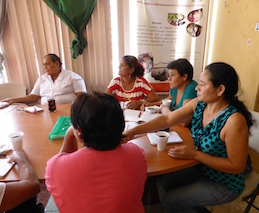 Interviewees: Council of Women of the West of Nicaragua (CMO)
Interviewees: Council of Women of the West of Nicaragua (CMO)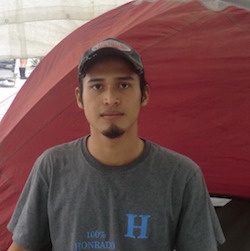 Interviewee: Gerson Suazo
Interviewee: Gerson Suazo Interviewees: Sisters Abdontxu Viar, Ana Lourdes, Paulina and Ana Noemi of the Berriz Sisters
Interviewees: Sisters Abdontxu Viar, Ana Lourdes, Paulina and Ana Noemi of the Berriz Sisters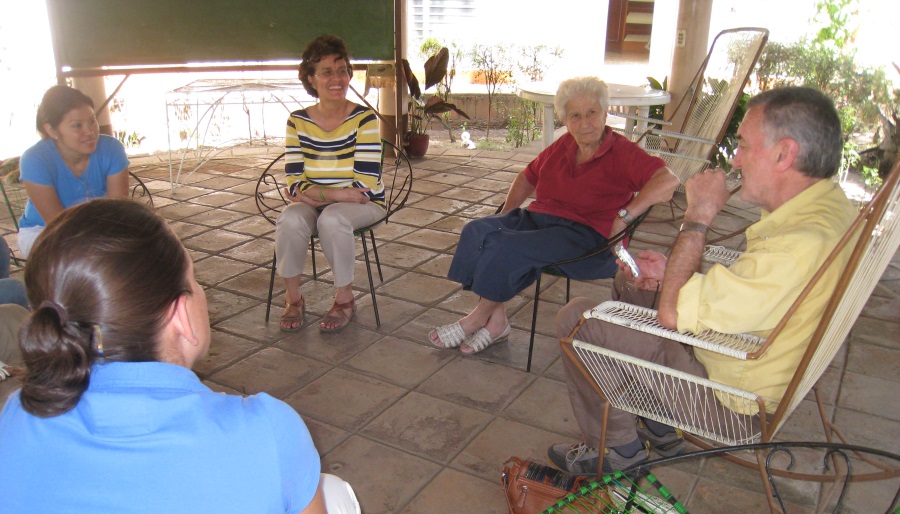


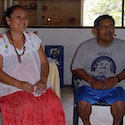


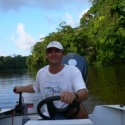
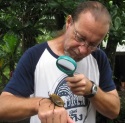

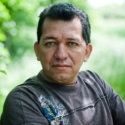



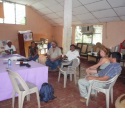

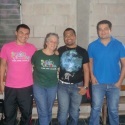
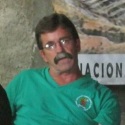
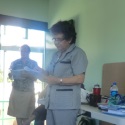
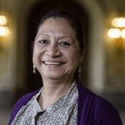

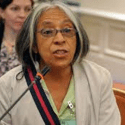
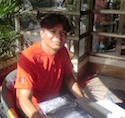
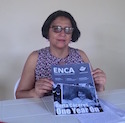
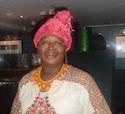
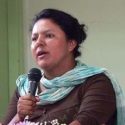
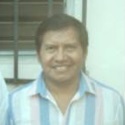
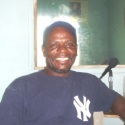
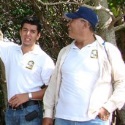
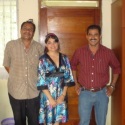

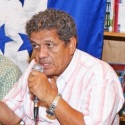
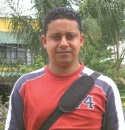
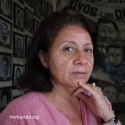


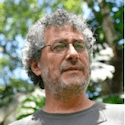
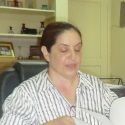
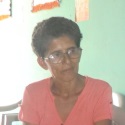
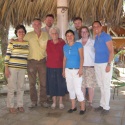

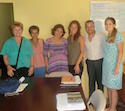

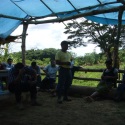
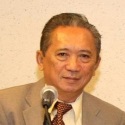
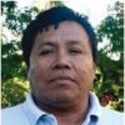

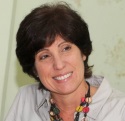
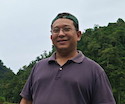
 Interviewee: Dr Juan Almendares
Interviewee: Dr Juan Almendares Interviewees: Candy and George Gonzalez
Interviewees: Candy and George Gonzalez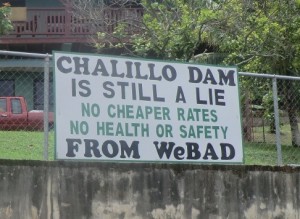
 Interviewee: Iduvina Hernández, Director of the Association for the Study and Promotion of Security in Democracy.
Interviewee: Iduvina Hernández, Director of the Association for the Study and Promotion of Security in Democracy. Interviewee: Daryl Loth, resident, guide and hotelier in Tortuguero
Interviewee: Daryl Loth, resident, guide and hotelier in Tortuguero Interviewees: María Consuelo Sánchez, Director of the Asociación Quincho Barrilete
Interviewees: María Consuelo Sánchez, Director of the Asociación Quincho Barrilete Interviewee: Carlos Flores of the Unidad Ecológica Salvadoreña (UNES)
Interviewee: Carlos Flores of the Unidad Ecológica Salvadoreña (UNES) Interviewee: Delmy Valencia
Interviewee: Delmy Valencia Interviewee: Matt Miller, Director of Monkey Bay Wildlife Sanctuary
Interviewee: Matt Miller, Director of Monkey Bay Wildlife Sanctuary